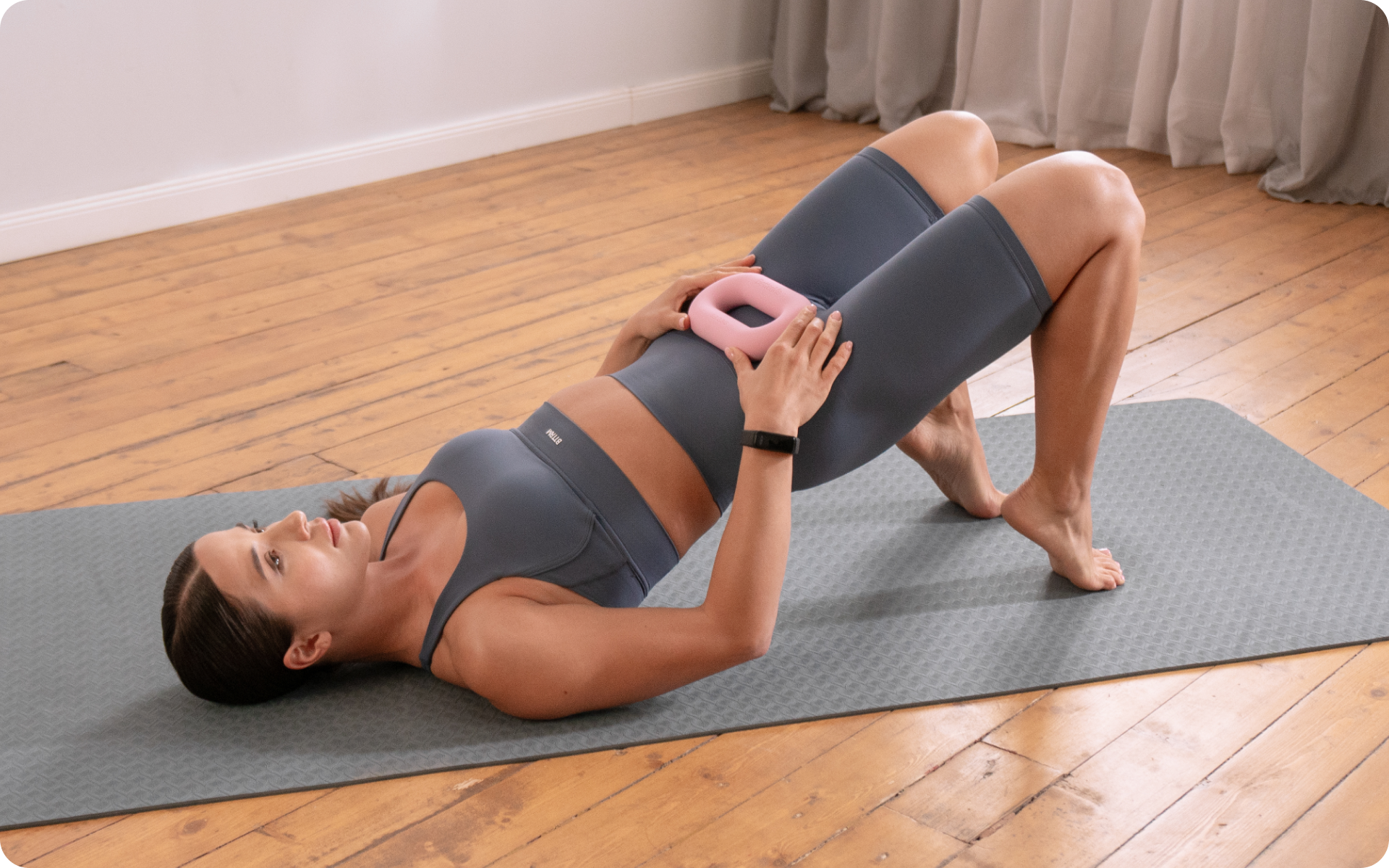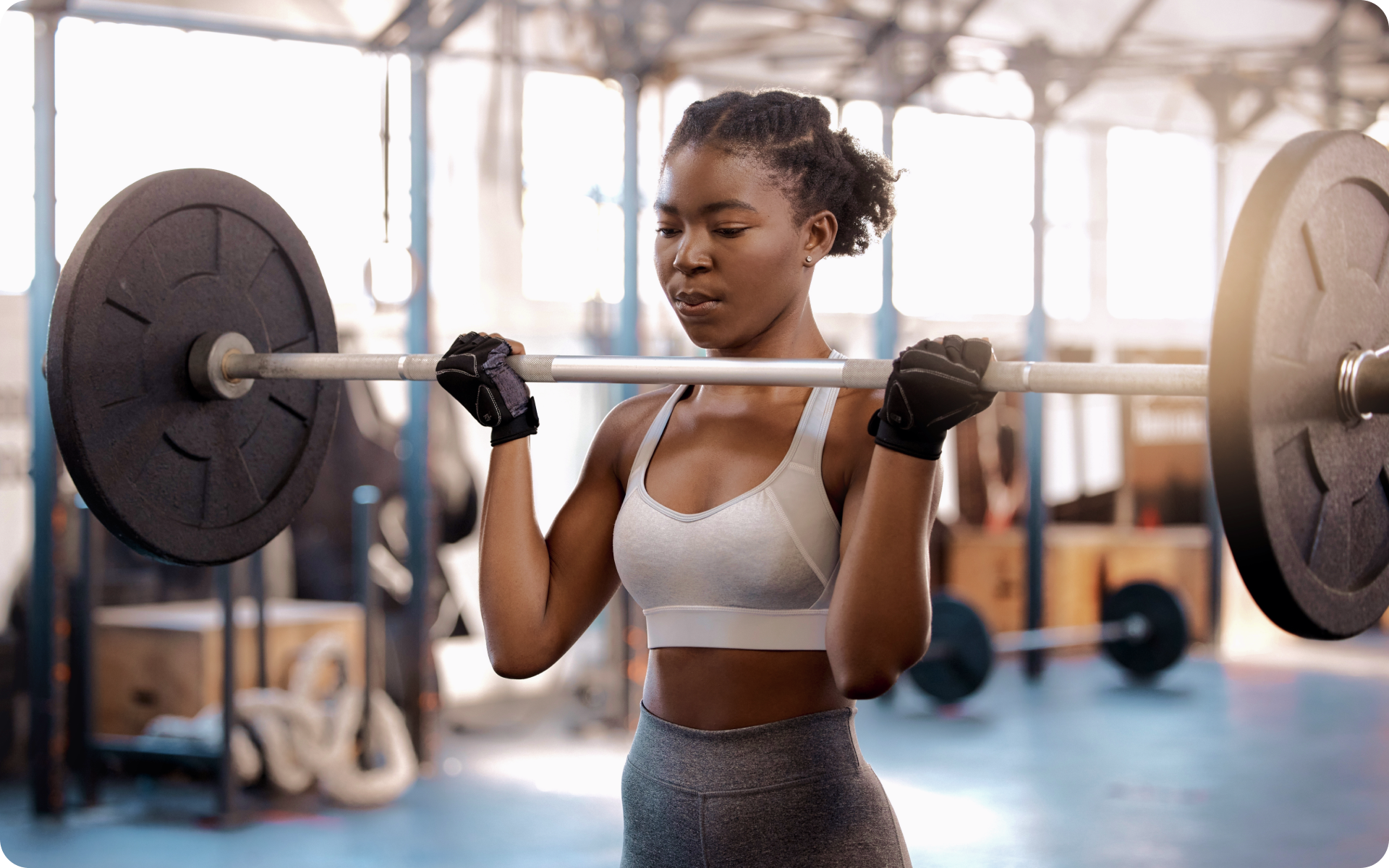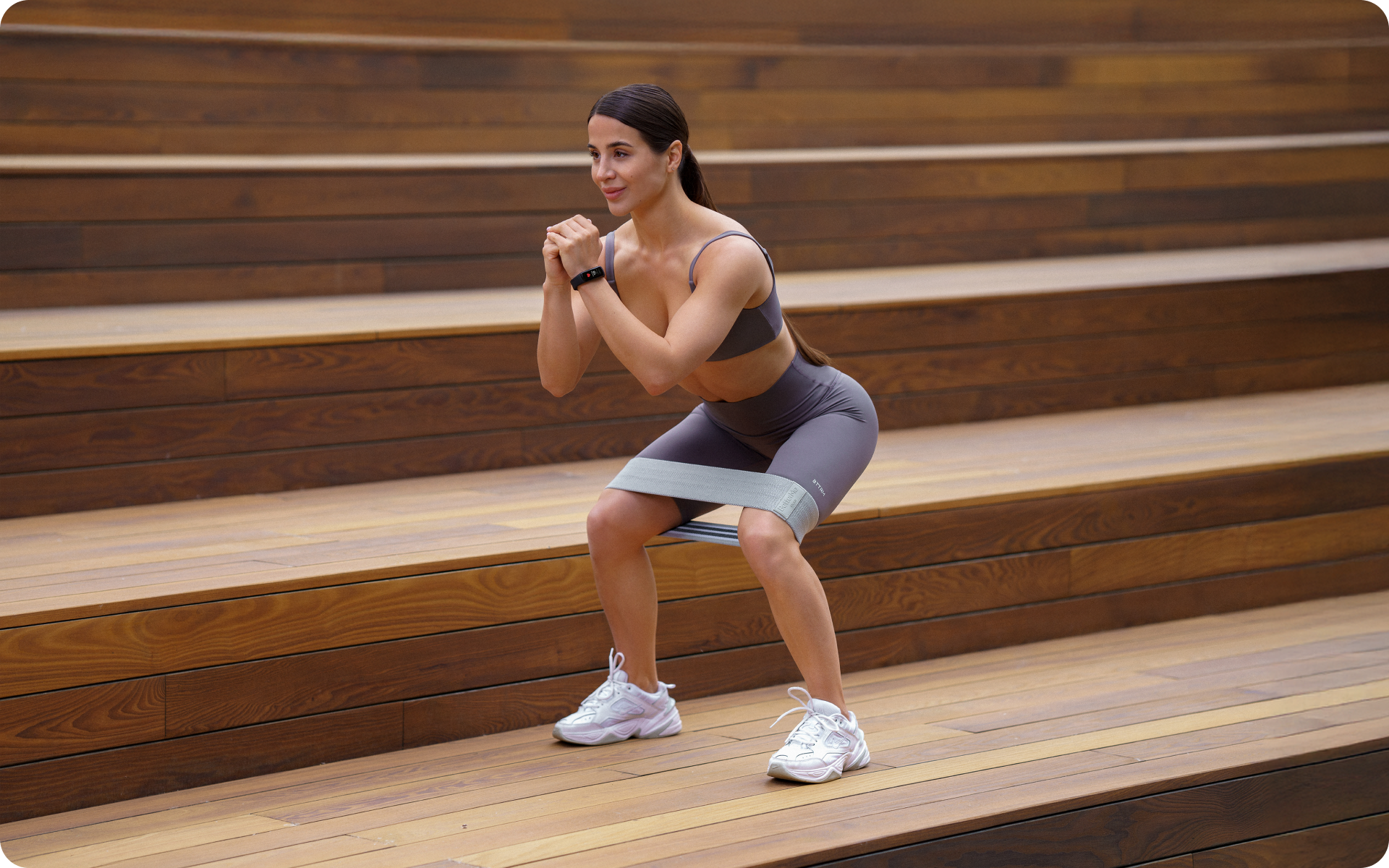Athletic events are not always the easiest to navigate, especially if it’s your first time participating. However, with the right training and discipline, you can get in shape in no time and power through them like a pro. This article gives you a beginner’s guide on how to approach your first sprint triathlon event.
Get your personalized
meal plan!
What Is A Triathlon?
The short answer? First, swim (usually in a lake, river, or pool), then get on your bike soaking, cycle, get off, and, finally, run in that order.
These challenges usually have “transition” spaces between them where you can change your equipment before the events, but not your outfit. It’s also during this time that you tune your mind and body to actively move from one event to the next. Simple enough, right?
A sprint triathlon (commonly referred to as sprint tri) usually consists of:
- A 300 to 800 yards swim
- A 10 to 15 miles bike course
- A 5K (3.1 miles) or shorter run
These distances are indeed relatively shorter than others, like the ironman’s distance, however, the pace and tempo they take place in can take a heavy toll on your body. To prepare you for that, we came up with this safe and effective beginner sprint triathlon training plan.
Beginner Training Plan For Sprint Triathlon: The Basics
Before diving into the training plan, there are some vital guidelines you need to observe to reduce the risk of injury.
Here are some of them:
Use The Correct Training Equipment
There’s always a lot of factors in play when it comes to preparing for and participating in athletic events. One of the most critical ones, however, is the equipment you use, seeing as they are crucial in helping you avoid any unnecessary injuries.
Here’s an in-depth guide of the best equipment you can use in your triathlon training plan and during the race:
-
For Your Swimming Workouts
The outfit you’ll use throughout the event is referred to as a race kit, which is usually either bottom, top, or one-piece. They should ideally be lightweight, comfortable, and can dry quickly. It’s also advisable you try out your race kit a day before the events to get a feel of it while it’s wet. Finally, always have your goggles on to improve your vision.
-
For Your Cycling Workouts
The first and most obvious equipment you need is a bike. You should ensure that it’s comfortable for your physique and is in good working order. Next, go for biking shoes that you can tie with ease and, of course, a helmet to protect you in a fall or unexpected accident.
Finally, you have the option of getting a pair of cycling gloves to protect your hands from splinters though this is not mandatory. Sunglasses can also be particularly beneficial for your eyes but are not required.
-
For Your Running Workouts
A good pair of running shoes is important for every athlete no matter the type of footwork you employ. Other accessories like inserts can be useful for heel strikers. Minimalist running shoes that are usually lighter with fewer features are also advisable in this case.
Read More: Swim Workout For Triathlon: The Ultimate Training Guide
Do Not Overtrain
Overtraining poses several health risks to you, including illness from too much intensity and negatively affects your appetite, mood, and mental health (6). Experts recommend taking a 24-hour break after training for more than four days in a row without rest in between
Start slowly by aiming for shorter workouts that focus on quality instead of quantity. You should also ensure that you stretch both pre and post-workout that will help you avoid injury (7). Dynamic warmups and strength work also help in preventing lower back pain and maintaining fitness during recovery, respectively (2).
Stay Hydrated
Your metabolic rate will naturally rise whenever you’re exercising, which can lead to dehydration if you’re not drinking enough water. You should avoid relying on thirst as a sign for hydrating. The color of your urine is a more accurate way of predicting your hydration levels. When you’re sufficiently hydrated, your urine should be clear or pale yellow. Aim to drink at least one liter of water per hour whenever you’re training (3).
Watch Your Diet When Training And On Race Day
Nutrition is one of the most important foundations of any successful endurance athlete. You’ll need foods that will provide you with energy for your workouts while building your muscles and replenishing used blood sugar. So whatever you eat plays a key role in either nourishing or sabotaging your plans.
Here are some guidelines to help you plan your meals:
-
Don’t Cut Down Your Carb Intake
Carb intake should make up 60-65% of your total caloric intake when you’re training. You should, however, focus on low glycemic or complex carbohydrates. They usually take longer to be digested and provide more stable blood sugar levels. Finally, avoid foods that are sources of simple sugars since they are known for causing erratic energy spikes and crashes. Some excellent pre-workout foods include bananas and whole food (4).
-
Take More Protein
Several studies have indicated that protein intake can lead to increased muscle and lean body mass alongside muscle strength. Resistance training coupled up with increased protein intake has been shown to help athletes build more muscles (1). This ultimately leads to better athletic performance. Your protein intake during your training should be about 1.2 to 1.7 grams per kilogram of your body weight (4).
-
Eat Your Veggies
Vegetables are an excellent source of nutrients. One of the most important things during training is replenishing any electrolytes lost through sweat. Foods that are high in magnesium and potassium like avocados, bananas, and broccoli can help in that. Bananas are particularly great because they are digested easily during racing or even when you have a stomach upset.
Make Room For Supplements
Supplements can help you fuel your body during training and on race day. Many nutritionists recommend using multivitamins to fill any nutritional gaps since not all foods contain essential nutrients for your health. They can also help in replenishing important nutrients like vitamin C that are lost when you sweat during exercise (8).
If you get any post-workout cramps or soreness, try taking fish oil supplements for a dose of omega-3 fatty acids. They will help improve your recovery process while reducing inflammation (5). If you’re not up for supplements, superfoods like fish can also serve as great alternatives.
BetterMe app will kick you out of the mental funk, shake off your extra weight, rid you off your energy-zapping habits, and help you sculpt the body of your dreams. Intrigued? Hurry up and change your life for the better!
How To Start A Beginner Sprint Triathlon Training Plan?
Any successful training schedules whether structured or unstructured rely on three components that determine how successful they will be.
Here are the three key things you need to look out for:
Consistency
Consistent training is the only way to improve your overall aerobic fitness. Swimming, biking, and running frequently most days of the week for about 8 to 12 weeks would be an excellent way to start in ensuring you finish your race successfully. Structured training schedules are usually the best way of maximizing your preparedness levels and speed, consistency remains to be the most crucial part.
Mental Fitness
Have you ever heard of people who go through training programs successfully but still underperform on race day? For most of these people, it’s usually due to poor mental preparedness and fitness. Finding an intrinsic motivation to keep you going will go a long way in ensuring you finish the race successfully. Remember, you are what you think most of the time.
Recovery
In any training plan, recovery usually happens in two stages. First is on a weekly basis where you schedule at least one rest day. Next is scaling back on your training volume by adopting lighter volumes every 3 to 6 weeks. Doing this helps your body become stronger and more adaptable while reducing your overall risk of injury.
That being said, let’s look at how to train for each event. A triathlon is different from other typical athletic events and should be treated as such even when training.
Here’s how you can approach it:
Preparing For The Swimming Phase
While the swim is usually the shortest part of a sprint triathlon, it’s usually the most daunting stage for new athletes.
Some important training strategies that can help you navigate this include:
-
Aim For Longer Distances
Once you find out the length of the swim in your race, work out so that you’re comfortable swimming a little longer than that. This will help ease any pre-race nerves while improving your overall fitness. It can also be helpful in cases where you’re swimming in open currents because the drifting will ultimately make you cover longer distances.
-
Prioritize Practicing In Open Water
It’s never usually the brightest idea to train for open water swims using exclusive pool workouts. While not all of your training needs to be in open water, make sure at least a couple of them are. This will greatly improve your endurance while better helping you navigate race day by eliminating any panic.
However, if you find yourself panicking in the open water, take a few minutes to float and do a doggie paddle or sidestroke. Relax and catch your breath during the break, constantly reminding yourself everything will be fine.
Read More: Triathlon Training Plan: How To Get In Shape For Your First Sprint
Preparing For The Cycling Phase
The biking stage can either be challenging or relatively comfortable depending on the course and your overall fitness. Hilly terrains are usually tougher to navigate compared to flat courses.
An effective strategy during your training is constantly shifting gears to vary your energy expenditure. Also, practicing on rolling terrains can help you get a better grip on shifting gears. Shifting into easy going uphill makes the whole process easier. However, tough gears will lead to increased resistance, and, as such, your legs will work harder and wear down faster.
Preparing For The Running Phase
Being the last stage in a triathlon event, running usually feels like the hardest part to navigate, and for a good reason too. Your body would have already received some major stress and it feels like you need to exert yourself extra hard to finish. As grim as that sounds, proper training can make this whole process easy to sail through.
One of the most efficient strategies for this event is incorporating bricks into your schedule. These are basically back-to-back bike/run workouts. Don’t worry if you experience “jelly legs” the first time you try this because that is perfectly normal. The more you keep practicing, the better your body will adapt making it easier to switch from the bike to the run.
Sample 8-Week Sprint Triathlon Training Plan For Beginners
A triathlon training plan beginner sprint involves several components that should be considered for it to work. This is just a guide to help you navigate your training schedule. At the end of the day, you’re free to make a few tweaks so that it best suits you.
Here’s how you can make a sprint triathlon training plan for beginners:
The first three weeks are all about building consistency. To determine your RPM (revolutions per minute) during cycling, count the number of times your right knee comes up in a pedal stroke for 30 seconds and double it.
Week 1
- Monday – Rest day
- Tuesday – Swim 16×25 (30”), place them evenly, and start slow, Zone 1
- Wednesday – Run 5x (2’ walk/ 3’ run in Zone 1), flat terrain
- Thursday – Bike 30’ flat terrain, Zone 1 at 80 to 90 RPM
- Friday – Day off
- Saturday – Swim 10×50 (45”), Zone 1
- Sunday – Run 6x (1.5’ walk/ 3.5’ run in zone 1), flat terrain
Week 2
- Monday – Day off
- Tuesday – Swim 24×25 (30”); pace these evenly, Zone 2
- Wednesday – Bike 30’ flat terrain as 15’ Zone 1, 15’ Zone 2 at 85-95 RPM
- Thursday – Run 2×10’ (2’ walking rest), flat terrain, Zone 1
- Friday – Day off
- Saturday – Swim 12×50 (35”), place these evenly, Zone 1
- Sunday – Bike 45’ rolling terrain as 15’ Zone 1, 30’ Zone 2 at 80-90 RPM
Week 3
- Monday – Day off
- Tuesday – Swim 8×75 (40”), pace these evenly, Zone 2
- Wednesday – Run 20’ rolling terrains as 10’ Zone 1, 10’ Zone 2
- Thursday – Bike 55’ flat terrain, 20’ Zone 1, 35’ Zone 2 at 85-95 RPM
- Friday – Day off
- Saturday – Swim 4×100 (45”), Zone 2. 6×50 (30”), going a little faster in Zone 3
- Sunday – Run 30’ flat terrain, Zone 1
Lean and toned up body isn’t just a far-fetched fantasy. Check out the BetterMe app and watch it propel your weight loss journey into high gear!
The next two weeks are all about increasing your endurance:
Week 4
- Monday – Day off
- Tuesday – Swim 12×75 (20”) as 6 in Zone 2, 6 in Zone 3
- Wednesday – Run 40’ rolling terrains as 15’ Zone 1, 25’ Zone 2
- Thursday – Bike 70’ rolling to hilly terrain, 20’ Zone 1, 50’ Zone 2 at 85-95 RPM
- Friday – Day off
- Saturday – Swim 10×100 (25”), Zone 2
- Sunday – Bike 45’ flat terrain, Zone 1 at 90-100 RPM, run 30’ flat terrain, Zone 1
Week 5
- Monday – Day off
- Tuesday – Swim 2×100 (30”), 4×100 (20”), all Zone 2
- Wednesday – Run 40’ rolling terrains as 15’ Zone 1, 25’ Zone 2
- Thursday – Bike 80’ rolling to hilly terrain, 20’ Zone 1, 25’ Zone 2, 15’ Zone 3, 20’ Zone 4 at 95-100 RPM
- Friday – Day off
- Saturday – Swim 500 (25’), 5×100 (20”), all Zone 2
- Sunday – Bike 60’ flat terrain, Zone 1 at 90-100 RPM, run 30’ flat terrain, Zone 1
These last three weeks are all about improving your race fitness:
Week 6
- Monday – Day off
- Tuesday – Swim 1000 non-stop, Zone 2
- Wednesday – Run 35’ rolling terrains as 15’ Zone 1, 20’ Zone 2
- Thursday – Bike 60’ flatter to rolling terrain, 15’ Zone 1, 10’’ Zone 2, 5’’ Zone 3, 5’ Zone 4, 15’ Zone 2, 10’ Zone 1 at 95-100 RPM
- Friday – Day off
- Saturday – Swim 10×100 (20”), Zone 2
- Sunday – Bike 40’ flat terrain, 15’ Zone 1, 15’ Zone 3, 10’ Zone 4 at 90-100 RPM, run 20’ off the bike, flat terrain as 10’ Zone 4, 5’ Zone 2, 5’ Zone 1
Week 7
- Monday – Day off
- Tuesday – Swim 500 non-stop, Zone 2
- Wednesday – Run 35’ rolling terrains as 15’ Zone 1, 10’ Zone 3, 5’ Zone 5, 5’ Zone 2
- Thursday – Bike 60’ rolling to hilly terrain, 15’ Zone 1, 10’’ Zone 2, 5’’ Zone 3, 5’ Zone 4, 15’ Zone 2, 10’ Zone 1 at 95-100 RPM
- Friday – Day off
- Saturday – Swim 5×200 (30”), Zone 3
- Sunday – Bike 30’ flat terrain, 10’ Zone 1, 15’ Zone 3, 5’ Zone 4 at 90-100 RPM; run 15’ off the bike, flat terrain as 5’ Zone 4, 5’ Zone 2, 5’ Zone 1
Week 8
- Monday – Day off
- Tuesday – Swim 200 non-stop, Zone 2
- Wednesday – Run 20’ flat terrains as 10’ Zone 1, 5’ Zone 3, 5’ Zone 4
- Thursday – Bike 30’ rolling to hilly terrain, 15’ Zone 1, 10’’ Zone 2, 5’’ Zone 3 at 95-100 RPM
- Friday – Day off
- Saturday – Swim 5×200 (30”), Zone 3
- Sunday – Bike 15’ Zone 1 at 90-95 RPM
Finally, there is no one-size-fits-all approach to this training plan. You can decide to use a 12-week, 8-week, or even 6-week beginner sprint triathlon training plan depending on your fitness level.
Conclusion
Preparing for triathlons can be quite demanding. However, with the training plan, motivation, and a little patience, you can definitely power through it! Time to take that first step, don’t you think?
DISCLAIMER:
This article is intended for general informational purposes only and does not serve to address individual circumstances. It is not a substitute for professional advice or help and should not be relied on for making any kind of decision-making. Any action taken as a direct or indirect result of the information in this article is entirely at your own risk and is your sole responsibility.
BetterMe, its content staff, and its medical advisors accept no responsibility for inaccuracies, errors, misstatements, inconsistencies, or omissions and specifically disclaim any liability, loss or risk, personal, professional or otherwise, which may be incurred as a consequence, directly or indirectly, of the use and/or application of any content.
You should always seek the advice of your physician or other qualified health provider with any questions you may have regarding a medical condition or your specific situation. Never disregard professional medical advice or delay seeking it because of BetterMe content. If you suspect or think you may have a medical emergency, call your doctor.
SOURCES:
- Dietary Protein and Muscle Mass: Translating Science to Application and Health Benefit (2019, nih.gov)
- Effects of Dynamic and Static Stretching Within General and Activity Specific Warm-Up Protocols (2012, nih.gov)
- Fluid consumption, exercise, and cognitive performance (2016, nih.gov)
- Fueling for Performance (2017, nih.gov)
- Impact of Varying Dosages of Fish Oil on Recovery and Soreness Following Eccentric Exercise (2020, nih.gov)
- Overtraining Syndrome (2012, nih.gov)
- Stretching and injury prevention (2004, link.springer.com)
- Vitamin supplementation benefits in master athletes (2014, pubmed.gov)












